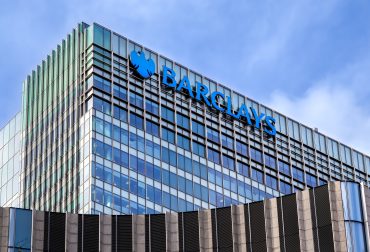
- Cloud & Infra
- Enterprise Software
- M&A
Cisco Leads $20B Cyber M&A Wave with Splunk Acquisition
6 minute read

Global cybersecurity acquisitions surge as tech giants seek AI-powered security platforms to combat emerging digital threats
Key Takeaways
- 41 deals announced in June 2025 represent continued high M&A activity in cybersecurity, driven by AI integration and platform consolidation strategies across major security vendors.
- $20 billion Cisco-Splunk acquisition leads massive consolidation wave, with Check Point’s $2 billion Cybereason purchase and other billion-dollar deals reshaping the competitive landscape.
- AI-centric acquisitions dominate as companies like Rubrik ($100M for Predibase) and Snyk target agentic AI capabilities to enhance threat detection and automated response systems.
Introduction
The cybersecurity sector maintains its acquisition momentum with 41 merger and acquisition deals announced in June 2025, signaling sustained investor confidence in a market driven by artificial intelligence integration and platform consolidation. Major technology companies are deploying billions of dollars to acquire specialized security capabilities, particularly in AI-enhanced threat detection and response systems.
This surge builds on 2024’s record activity, when SecurityWeek reported 405 cybersecurity-related transactions. The current wave reflects enterprise demand for comprehensive security platforms that can address evolving cyber threats while reducing technology stack complexity.
Key Developments
Cisco’s approximately $20 billion acquisition of data observability platform Splunk represents the month’s largest transaction, marking a significant shift toward integrated security and analytics solutions. This deal establishes new valuation benchmarks for the sector and demonstrates the premium companies pay for platform integration capabilities.
Check Point Software Technologies revealed plans to purchase endpoint security provider Cybereason for $2 billion, expanding its threat prevention portfolio. Similarly, McAfee acquired Trellix for $1.3 billion to enhance cloud security offerings, while Sophos purchased AI-based antivirus leader Cylance for approximately $1 billion.
Several transactions focus specifically on AI capabilities. Rubrik announced a $100 million acquisition of Predibase to accelerate agentic AI implementation, while Cellebrite agreed to acquire mobile virtualization firm Corellium for $200 million to enhance digital investigation capabilities.
Platform integration drives additional deals, including Cyera’s acquisition of cloud-native security specialist Otterize and identity management firm ShapeAI. NinjaOne completed a $270 million purchase of backup provider Dropsuite to expand its unified service offerings.
Market Impact
The sustained transaction volume maintains cybersecurity valuations at elevated levels, with investors targeting platform vendors offering differentiated capabilities in high-growth categories. Cloud-Native Application Protection Platforms and Data Security Posture Management solutions command particular premium pricing.
Strategic buyers are consolidating capabilities across cloud security, identity management, and security operations to offer integrated platforms. This consolidation reduces competitive fragmentation while creating larger, more comprehensive security providers capable of serving enterprise clients’ complete requirements.
Investment priorities center on AI-driven security technologies, with companies acquiring machine learning and automation capabilities to enhance real-time threat detection and response. The emphasis on agentic AI reflects market demand for autonomous security systems that can operate with minimal human intervention.
Strategic Insights
The acquisition wave reveals fundamental shifts in cybersecurity business models. Companies are moving beyond point solutions toward comprehensive platforms that integrate threat intelligence, response capabilities, and compliance management into unified offerings.
AI integration drives much of the strategic activity, as traditional security vendors acquire specialized artificial intelligence capabilities to remain competitive. The focus on agentic AI and large language model technologies indicates industry preparation for autonomous security operations.
Backup and disaster recovery solutions gain prominence amid rising ransomware threats. Companies are investing in advanced recovery capabilities that emphasize business continuity and resilience against sophisticated attack vectors.
The hybrid workforce environment creates new security challenges, prompting investment in behavioral analytics and data loss prevention technologies. Organizations are acquiring capabilities to monitor insider threats and secure distributed work environments.
Expert Opinions and Data
Industry analysts view the sustained M&A activity as evidence of strong sector fundamentals and growth prospects. The pace of acquisitions reflects both opportunity and necessity, as companies must adapt to rapidly evolving threat environments.
Security vendors emphasize the strategic importance of platform integration in their acquisition strategies. The goal is reducing technology stack complexity while improving threat prevention capabilities through unified security architectures.
Investment professionals note elevated valuations but maintain confidence in long-term sector growth. The focus on AI-enhanced security capabilities and quantum-ready solutions positions acquired companies for future threat environments.
Enterprise security leaders face increasing pressure to enable digital transformation while maintaining robust security posture. This dynamic drives demand for comprehensive security platforms that can support innovation while ensuring resilience.
Conclusion
The June 2025 cybersecurity acquisition activity demonstrates the sector’s strategic pivot toward AI-enhanced, integrated security platforms. Major transactions totaling billions of dollars reshape the competitive landscape as companies build comprehensive capabilities to address evolving cyber threats.
The emphasis on artificial intelligence, platform consolidation, and quantum-ready security technologies positions the industry for continued growth and innovation. These acquisitions represent both defensive and offensive strategies as companies compete for market leadership in an increasingly critical sector.







